
INTERVIEW WITH CONTEMPORARY INDIAN ARTIST RAMESH GORJALA
My introduction to artist Ramesh Gorjala happened in 2007. At that time, I was getting exposed to a variety of artists in India and their unique styles, and loving every moment of it. There was buzz in the art world about this new artist whose works were selling like hot cakes, and his paintings were unique, combining a traditional art form like Kalamkari with modern day techniques. I was intrigued!
I remember Ramesh as being soft spoken, shy, down to earth and humble. Since then, over the years of working with him, I have gotten to know the person behind the art and watch his work evolve over time. I am amazed at how he is always experimenting to come up with some unique treatment for his works, while staying within the original boundaries and theme of Kalamkari and contemporary art. And, despite gaining immense fame and success, he continues to be grounded and true to his roots.
What follows is an excerpt of a recent conversation with him during my recent visit to India, about his roots in Kalamkari and his journey as an artist.
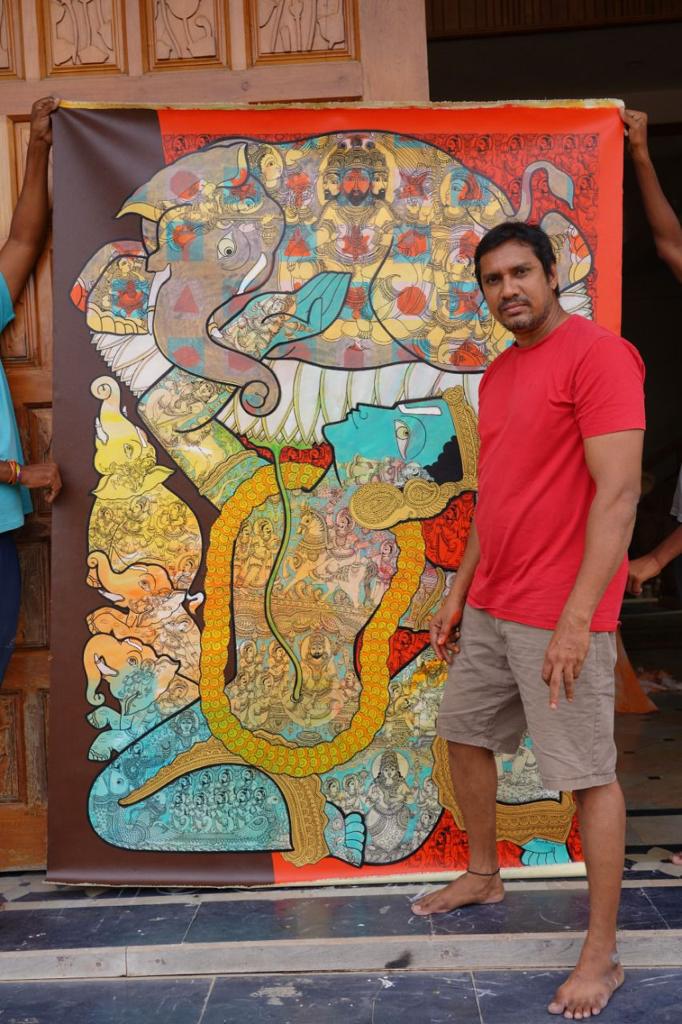
Ramesh, what does art mean to you?
Very difficult question, madam. Without art, my life would be over. It is a part of my life — from 9:30am to night, sometimes 1:30am or so. There is no other thought in the mind.
You grew up in a small town in Andhra Pradesh, and now you are one of the top artists in India. Can you talk about the beginning of your artistic journey?
I come from a small village, where one of my friends belonged to a family of folk artists — I was fascinated by his work and I pleaded with my friend to teach me those skills. I was in grade 9 then. I told my father that I wanted to learn how to draw, so he contacted one of my uncles in the village, Balaji Theertham. He taught me Kalamkari drawing. My grandfather apparently had something to do with Kalamkari as well, while my parents were weavers and owners of handlooms to make Venkatgiri sarees.
I always wanted to add something different to traditional Kalamkari and its techniques. Not knowing better, I registered for a B Com (Bachelor of Commerce) degree in 1998, but dropped out after the first year as I began to explore drawing and painting on my own. Around that time, someone told me that I could actually study art in college, and that’s how I went to JNTU in Hyderabad.
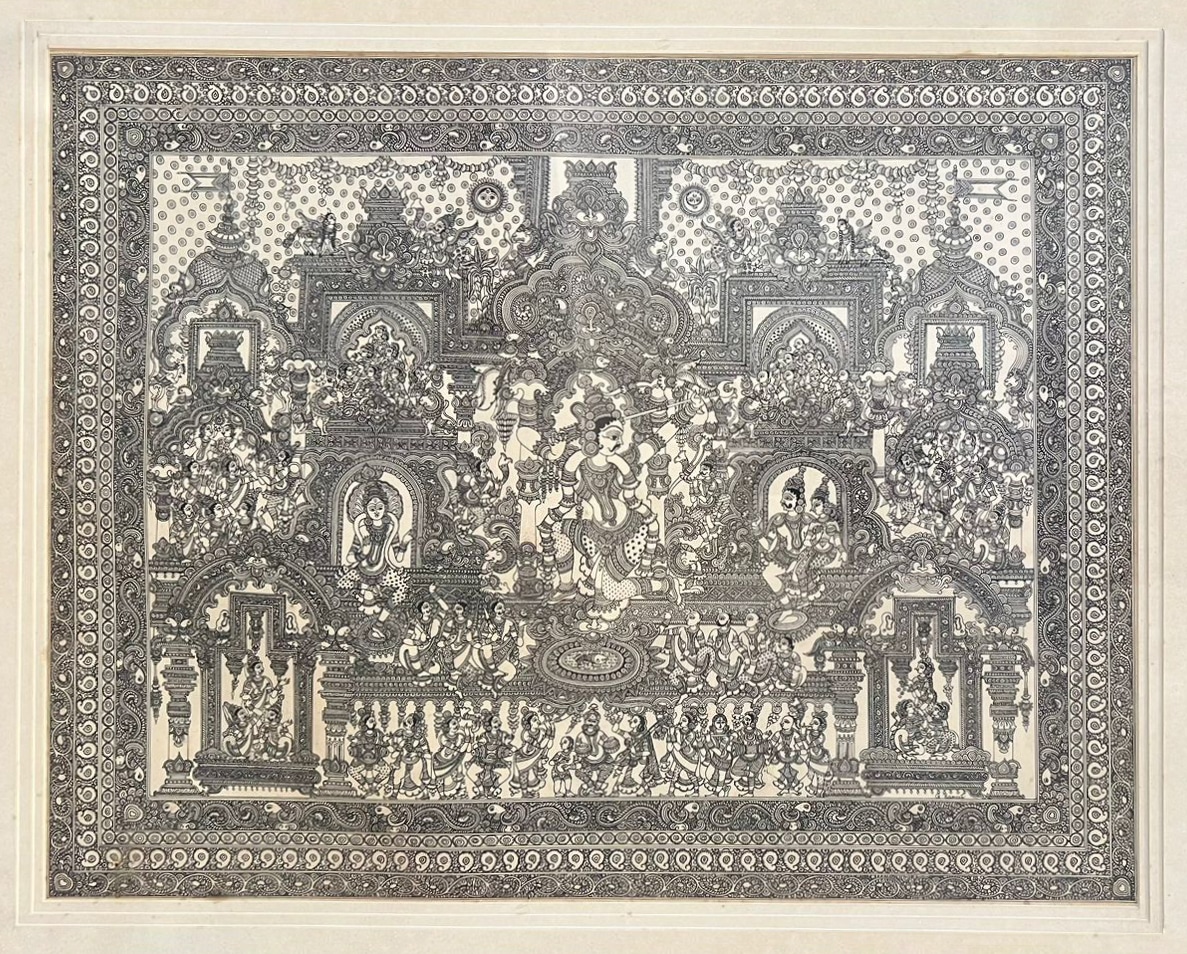
How was the experience in art school?
Because traditional kalamkari used vegetable dyes, I was introduced to acrylic colors in art college. I struggled with how to mix them, but I learnt. In my final year, however, my teacher was Stanley Suresh. He told us that the mind is a powerful tool. Submit one art assignment every week, using only the mind. We did that for the entire year. For the first time, I understood what happens in the mind, how I think and can express that via drawing. It was his way of teaching what contemporary art is all about.
How did the community of senior artists in Hyderabad help provide a launching pad in your career?
Senior artists like Laxman Aelay, Fawad Tamkanat, Stanley Suresh and Hanumantha Rao began to organize exhibitions of their work, in India and abroad. I observed how they worked. For example, watching Husain draw his horses, one could learn how to draw a horse. I got ideas from watching their work and understood the importance of ‘idea.’ I began to work on this and made a few drawings on paper.
Artist Laxman Aelay showed my work to a gallerist from Mumbai and helped me to purchase canvas material too. Then Fawad sir picked up a few works for the Harmony Show, where I traveled for the first time on a flight to Mumbai! While in Mumbai, I showed some of my rolled up canvases to a leading Mumbai gallery where I was offered a two-man show in 2003. Sangita Jindal actually bought my first large painting on canvas then.
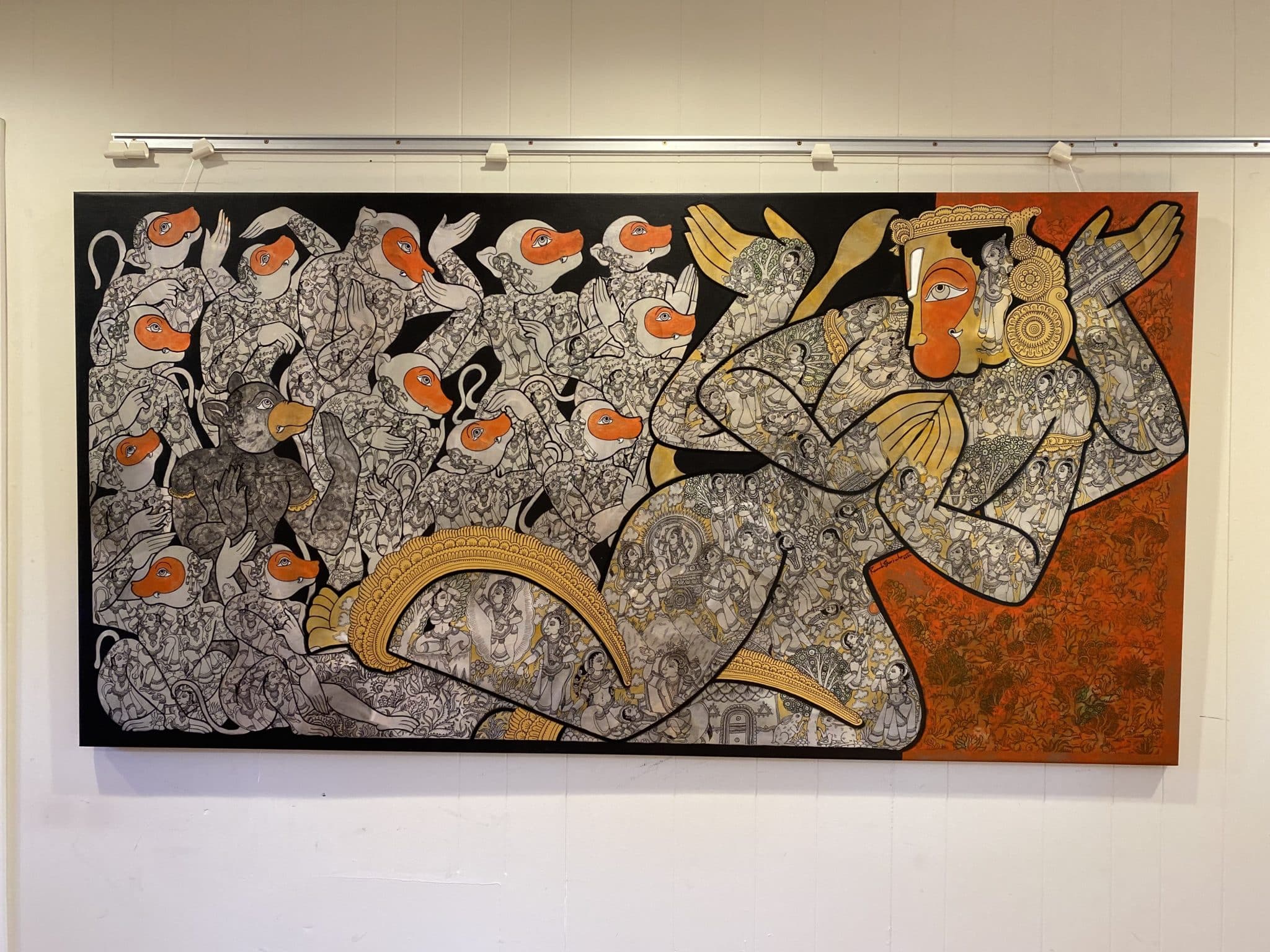
Almost 20 years later, your themes and basic designs come from Kalamkari and remain the same, often featuring the same deities. How do you continue to inject them with a freshness and newness?
I work with stories from Indian mythology. These are old and known to many, but as one works, new ideas keep coming. I also continuously work on refining the way I draw anatomical features, on the composition. I have no problems with large canvases. It is the smaller canvases that are more challenging to compose!
Which is your largest canvas to date?
I had made one painting 15 x 8 feet. There was only one figure, Vishnu.

What theme do you love to explore?
Krishna is my favorite, especially the stories from the Bhagavad (Purana). Vishnu is also a preferred theme. Then Hanuman too. I like all three!
What are the steps in creating your work?
I first prepare the canvas and chart out the colors according to what I have decided to create. Then, I draw the figures with a light charcoal outline, doing rough drawings of the figures and other elements, with freehand working directly on the canvas, inside the larger figures. Then with a Rotring pen, I draw all the stories that I want to populate the painting with. Once that is done, I put the paint on the body and later fill in the background with color. After that, lastly, I do the shading.
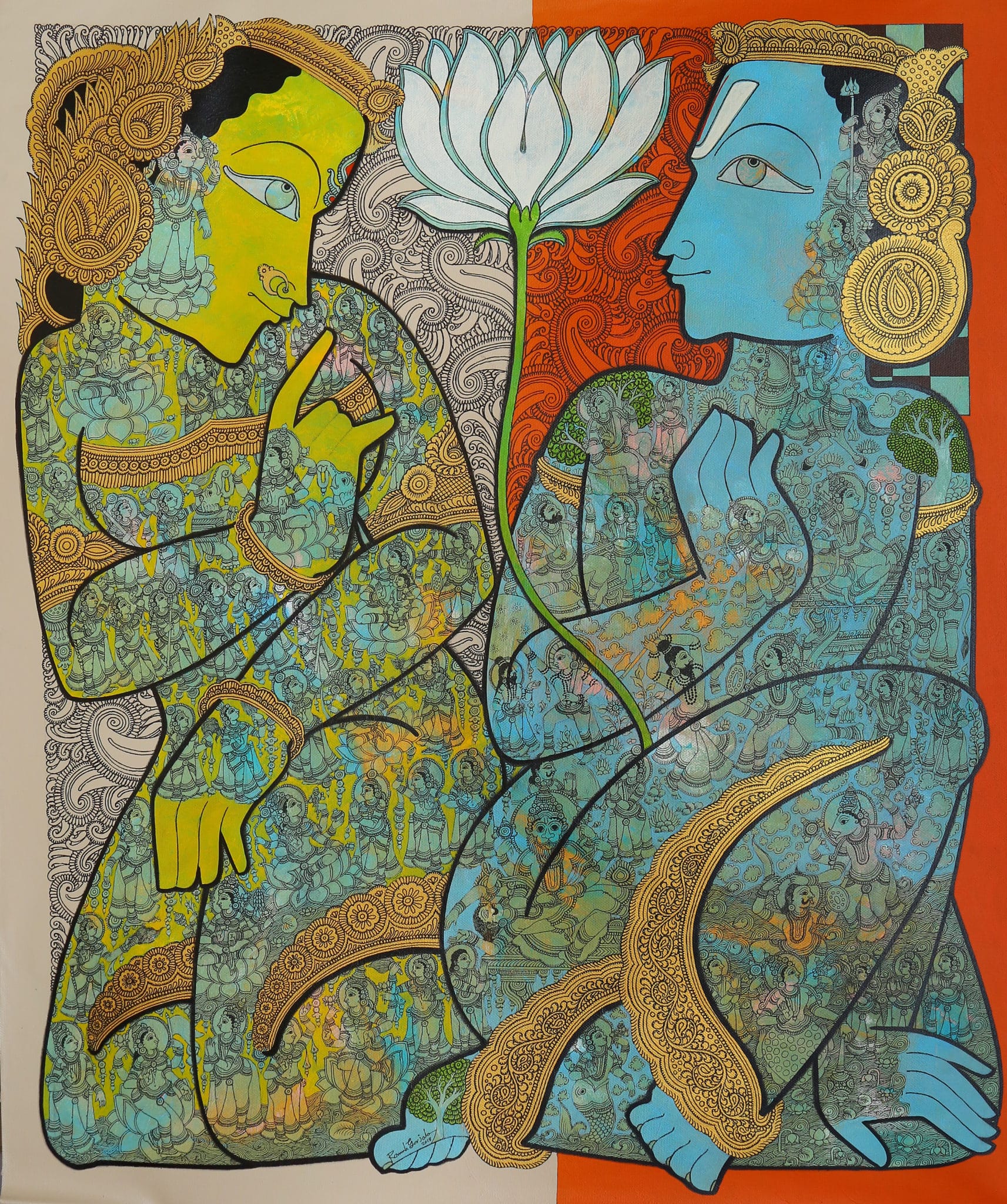
Which artists inspire you?
I like the works of Mr A. Ramchandran the most, but also Laxma Goud and M. F. Husain. I have seen some really huge paintings of Husain’s in a Qatar museum, mind-blowing work. And I like how he has done themes from the Bhagvatam and such a variety of gods in his works — Krishna, Saraswati, Lakshmi, Ganesha and so on.
What advice would you give to young artists who are just out of art school today?
I would advise them to create something that is uniquely you and easily identifiable as that. This has to come from within yourself. But do look outside — see what other artists in the world are doing, and then look within to find your own style. You cannot do this in isolation. It has to be in the context of the larger world.
Finally, what do you think helped you gain such a name in the art world?
I know I have worked sincerely, and to the best of my ability. I have not thought about fame and all that.
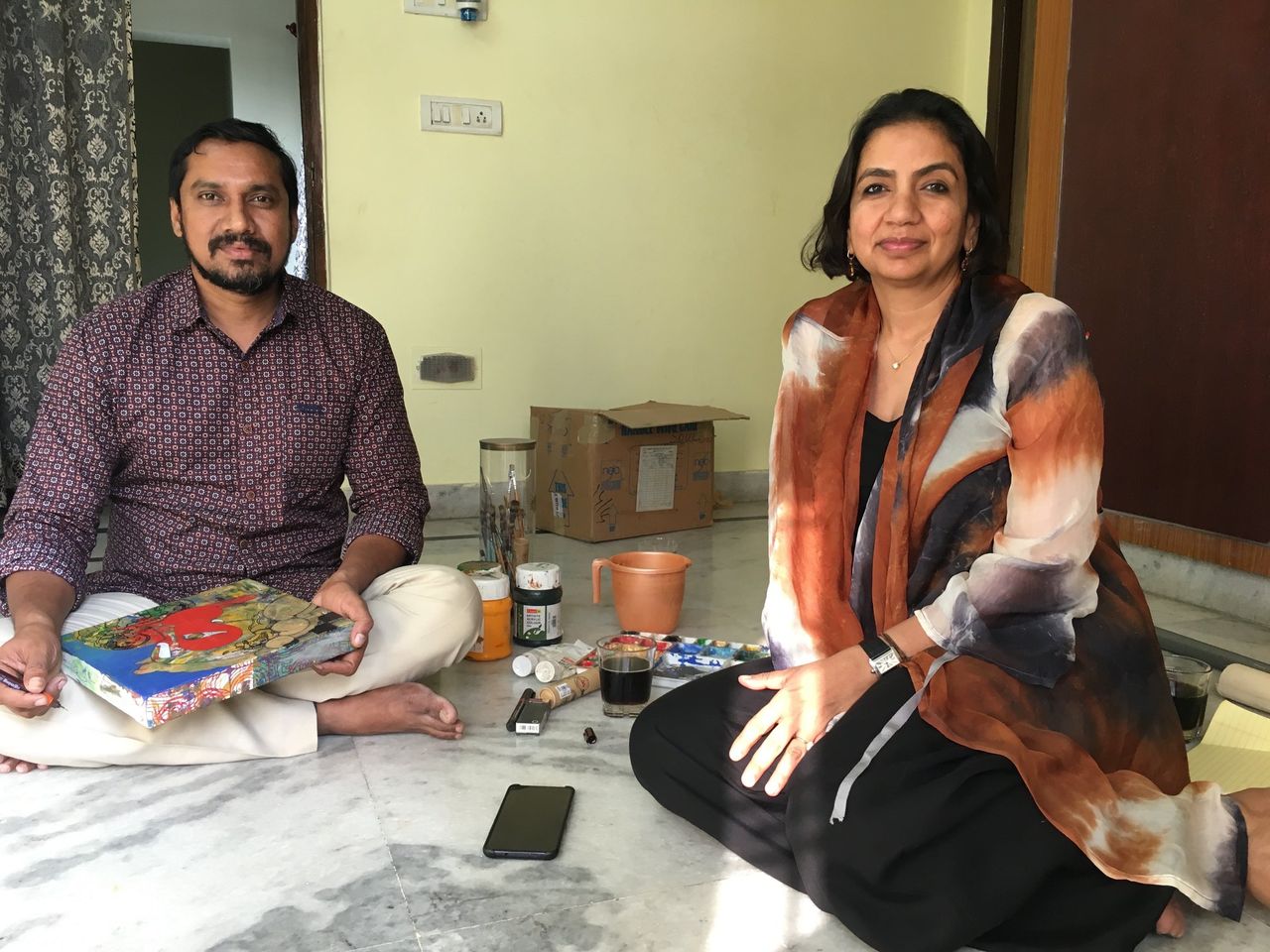
Thank you very much, Ramesh.
I hope you enjoyed getting to know Ramesh and the history and inspirations behind his stunning paintings. To browse our curated collection of contemporary paintings by Indian artist Ramesh Gorjala, visit https://laasyaart.com/ramesh-gorjala/. If you would like to make an appointment to see these works in person at our Indian art gallery in Palo Alto, please reach out at info@laasyaart.com or +1 650-770-9088.
— Sonia Patwardhan

Leave a Reply
You must be logged in to post a comment.